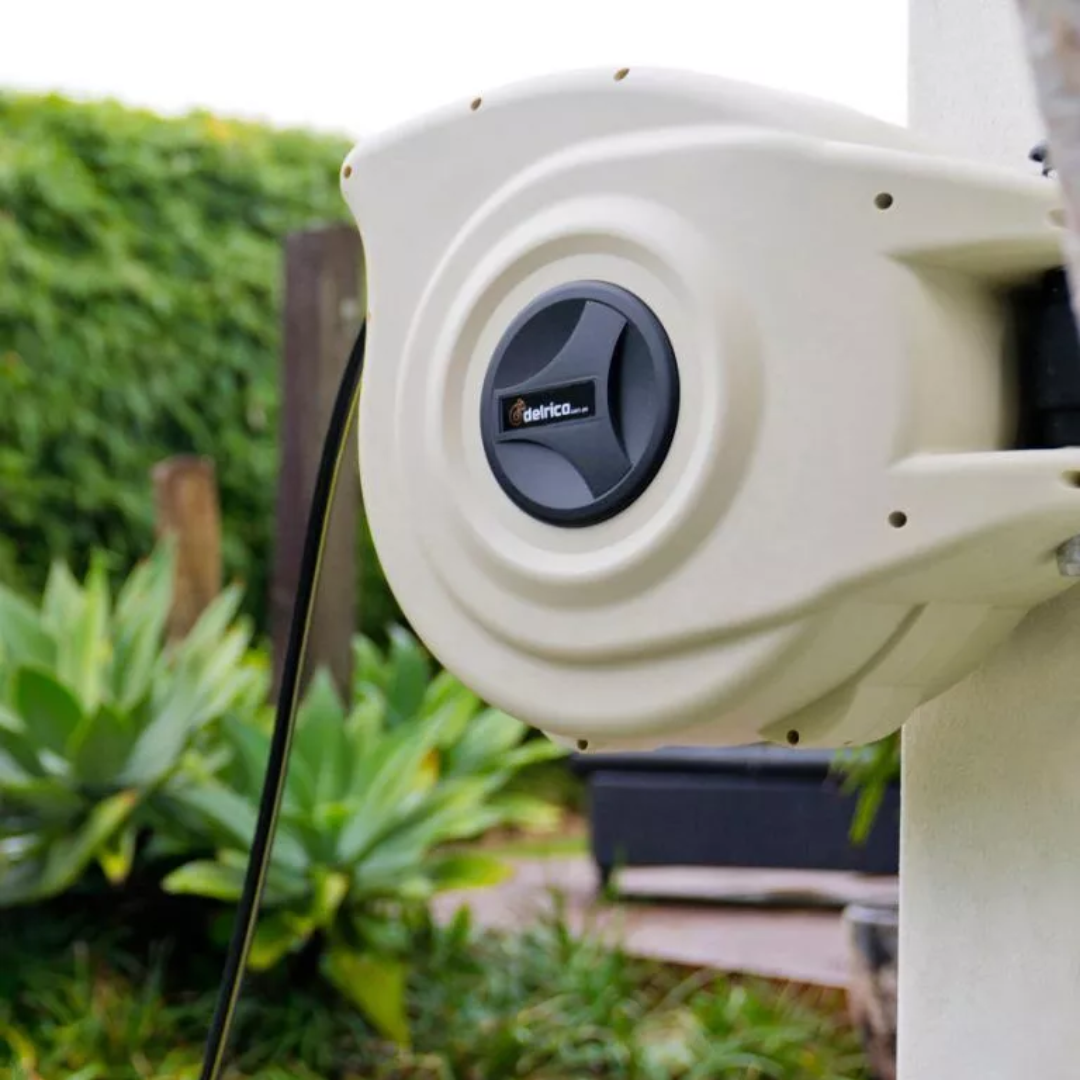A garden water hose holder is vital, whether you have an acre-long grass or a patio garden. Garden hoses may be used to irrigate grass and plants, rinse off outdoor toys, and wash your automobile. Most hardware and home improvement shops offer full aisles of garden hoses. Take time to evaluate all the alternatives so you can get the right garden hose.
How to choose a garden hose
No one garden hose is ideal for everyone. What works best for you depends on the size of the area you’ll be using it, what you’ll use it for, and where you’ll keep it, as well as your budget. There are six things to consider while buying a hose.
1. Hose Diameter – Width = Water Flow
Most garden hoses are 3/4″, 5/8″, and 1/2″. These specifications are based on the hose’s internal diameter. The wider the hose, the more water it can hold.
Most hoses are 5/8 inch wide. It has excellent water flow, pressure, and weight.
If weight is a concern, use a half-inch hose. Due to their lower diameter, they transport less water. Half-inch garden hoses should be 50 feet or less and used to water pots and hanging baskets. These hoses aren’t good for sprinklers or anything requiring strong water pressure (like washing your car).
2. Length: Longer isn’t better
25-, 50-, 75-, and 100-foot hoses are available. It’s tempting to purchase one longer hose for all your lawn watering requirements. Don’t. Longer hoses cost more, are heavier to transport, take up more storage space, and may reduce water pressure.
Buy a hose that reaches the furthest point from your spigot. Pulling on the hose to expand it can produce snags or leaks.
A 25-foot retractable garden hose reel Online works on a deck or balcony. Most urban yards need a 50-foot hose. If you need a hose longer than 50 feet, purchase two and link them. So you’re not always carrying a big garden water hose reels holder in australia.
3. Cast-brass couplings
Couplings connect to spigots, sprinklers, and nozzles.
Cheaper hoses feature plastic connections. They leak, shatter, and break easily and can’t be adequately tightened. Plastic degrades fast in the sun.
Stamped or cast brass (often chrome-plated) connections are used. Cast brass is thicker than sheet metal and commonly has an octagonal form for wrench-turning couplings. Cast brass couplings are leak-resistant and robust. Thin stamped-metal fittings might be hard to tighten at the spigot, flex quickly, and break down over time.
For people with stiff fingers or poor grip strength, a big octagon-shaped coupling is simplest to tighten. Many hoses include a tiny plastic washer in the connection, but it breaks easily. We suggest using a high-quality rubber washer (like this one from Gilmour) at the best hose reels fitting/spigot/nozzle connector. This stops leaks.
Find the collar. Quality hoses feature a plastic or rubber “collar” spanning 4-6 inches from one connector. This minimizes kinks and splits around the spigot.
4. Test Your Adaptability with the Kink
The ideal garden hose will be bendable enough to be readily stored and maneuvered, but not so pliable that it kinks at the slightest provocation. The hose’s lifespan is shortened when it kinks, and it may even split if the kinks are severe enough. Even the “kink-free” best garden hose reel may kink if twisted, however certain models are more durable than others. Reinforced hoses and rubber hoses, in particular, are less prone to kink than other types.
5. Durability – Measure the Burst Pressure
The “burst pressure” of a flexible garden hose is an indicator of its durability (the water pressure at which it is likely to rupture). Choose a hose with a burst pressure more than 350 psi if you plan on employing a nozzle or sprinkler with it. Check your pressure washer’s instructions before purchasing a hose, as you may need a more powerful unit.

Leave a Reply
You must be logged in to post a comment.